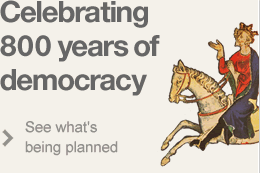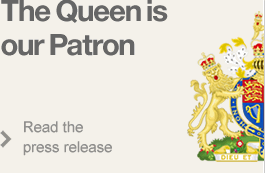William d’Albini was a relative latecomer to the cause of the baronial opposition, but one of the movement’s ablest commanders and the leader of the defence of Rochester against King John in 1215. After John’s son, Henry III, succeeded to the throne in 1216, he showed himself a loyal supporter of the new regime.
William (after 1146-1236) was the son of William d’Albini II by his wife Maud de Senlis, daughter of Robert de Clare, the grandson of another William, known as ‘Brito’, and the eventual heir of the first post-Conquest lord of Belvoir, Robert de Todeni. William’s lordship was an extensive one comprising some 33 knights’ fees, stretching across much of the east and north Midlands, and partly overlooked by Belvoir (Leics.) itself, dramatically sited on a ridge west of Grantham.
William was a minor at the time that his father died in 1167 or 1168 and appears to have come of age in about 1172. He witnessed charters of Henry II in England and Normandy, and from 1190 to 1193 served as constable of the castle of the Peak. For his support of King Richard against the rebellion of the king’s brother John, he was rewarded with part of the estate confiscated from the rebel, Roger de Montbegon. In 1194 he travelled to Speyer in Germany, to greet Richard on his release from captivity. Like a number of the Twenty Five, in John’s reign he embarked on the road to rebellion only reluctantly, being by upbringing and instinct a natural royalist. He had long experience of serving in royal administration locally. He served as sheriff of Rutland from 1195 to 1198, as sheriff of Warwickshire and Leicestershire from 1196 to 1198, and as sheriff of Bedfordshire and Buckinghamshire in John’s first year. In the 1190s and later, he acted as an itinerant royal justice and in 1211-12 he was appointed keeper of the ports in Lincolnshire and Yorkshire. In February 1213, as John’s suspicions of the northern lords deepened, he served as a commissioner to look into money allegedly collected by sheriffs and other officials that never found its way into the royal coffers. His kinship to a number of the northern lords may have been a factor in his appointment.
For all his involvement with royal government under John, however, William was not entirely uncritical of the king’s policies. In 1201 he was party to a baronial confederation objecting to military service in Normandy on the grounds that it was contrary to their terms of tenure. In 1215 William threw his weight behind the baronial opposition shortly after the barons’ takeover of London in May, doing so for several reasons. Almost certainly he had grown disenchanted with the oppressive nature of John’s rule. Five years before, he had been a witness to John’s official account of the reasons for his destruction of the Braose family, thereby associating himself with the king’s actions, while at the same time becoming aware of their arbitrariness. Secondly, he is almost certain to have been influenced by the ties of kinship. He was the first cousin of Robert FitzWalter, lord of Dunmow, to all intents and purposes the leader of the rebellion, and was the uncle of another rebel, Robert de Ros, the lord of Helmsley. It may also be significant that among his knightly tenants was Nicholas de Stuteville of Knaresborough, the greatest baronial debtor to the king of all.
In June 1215 his experience and social standing ensured his appointment to the Twenty Five and from the autumn, after the renewal of war, he fought actively on the baronial side. In July, after the barons had gone their separate ways, Robert FitzWalter was writing to him to advise of a change of meeting-place for a tournament from Stamford to Hounslow Heath. John’s strategy in the civil war was to counter the baronial challenge by bringing in a force of mainly Flemish mercenaries to assist in the recapture of London. The barons, to prevent these men’s passage inland from Dover, made for Rochester, at the bridging point over the Medway, and quickly took the castle, installing William as constable. John retaliated by immediately embarking on siege operations. The castle, though ill-provisioned, was well manned, with some 95 knights and 45 men-at-arms under William’s command, and strong resistance was offered. Both sides fought fiercely. ‘Living memory does not recall a siege so closely pressed or so bravely resisted’, wrote the Barnwell chronicler. To eke out the meagre food rations in the castle, d’Albini ordered the sick and the wounded to be ejected, a common tactic in medieval sieges; according to the Barnwell writer again, the king had their hands and feet cut off. The turning-point in the siege came in November, when the king’s men successfully undermined one of the keep’s corner towers, bringing it down, and opening a way in. William had no alternative but to surrender, and he and his garrison were despatched to captivity at Corfe in Dorset.
Following this success, the king made his way to the Midlands, where he directed the siege of William’s castle at Belvoir. After he had issued a threat to starve William himself if the garrison continued to resist, the latter’s son Nicholas, who was heading the defence, hastily offered his surrender. In July 1216, partly through the good offices of his wife, William agreed terms with the king, offering a ransom of 6000 marks. He had handed over 1000 marks of this sum by November when, shortly after the accession of the new king, Henry III, he was released, his wife offering herself as a hostage instead. In 1223 William was permitted to pay off the balance of the ransom in easy instalments of 40 marks a year. William’s career from 1217 was that of a committed supporter of the new Minority regime. He fought on the Regent’s side at Lincoln, and his loyalty was to earn its reward in his appointment as constable of Sleaford Castle (Lincs.). In 1223 he joined the young Henry III on his campaign against Prince Llewellyn and the Welsh at Builth Wells and Montgomery. Two years after this, he was one of the group of counsellors who witnessed the final and definitive reissue of Magna Carta and the Charter of the Forest.
William died on 1 May 1236 at his manor of Uffington, near Stamford (Lincs.). His remains were interred in the priory which he had founded at Newstead, just outside the village; his heart, however, was removed for separate burial at Belvoir Priory. Between 1221 and the early 1230s the future chronicler, Roger Wendover, was prior of Belvoir, a dependent house of St Albans. It seems very likely that he was indebted to d’Albini for his account of the siege of Rochester, which is full of circumstantial detail.
William was twice married. His first wife was Margery, daughter of Odinel de Umfreville of Prudhoe (Northumberland), who died sometime before 1198, and his second, Agatha, daughter and eventual coheiress of William Trussebut of Hunsingore (Yorks.). William’s heir was yet another William, who died in 1247 leaving only daughters, one of whom, Isabel, married Robert de Ros (d. 1285) of Helmsley, descendant of the lord of that name who was of the Twenty Five, so carrying the d’Albini inheritance to the Ros family.
The family of d’Albini of Belvoir is not to be confused with that of the same name based at Old Buckenham (Norfolk) and Arundel (Sussex), which held the title of earl of Arundel.
By Professor Nigel Saul, Royal Holloway, University of London.
Featured Article
Introduction – Runnymede and all that. Winston Churchill described the Magna Carta as “the foundation of principles and systems of government of which neither King John or his nobles dreamed”. Now in Politics we’re used to the law of unintended consequences...
Read on...Recent Articles
- Magna Carta's American Adventure
- 800th anniversary of Bristol...
- Bristol 800 concert and...
- Emancipation and Magna Carta
- Terrorism and Tolerance -...
- Magna Carta
- Magna Carta Benches mark...
- ABA Magna Carta Memorial...
Stay updated
If you would like to keep informed about the work of the Magna Carta Trust and our partners, please sign up to the newsletter below.
Become a Supporter
There are a number of significant supporter opportunities. Register your interest early to ensure the widest range of options.
Find out more




